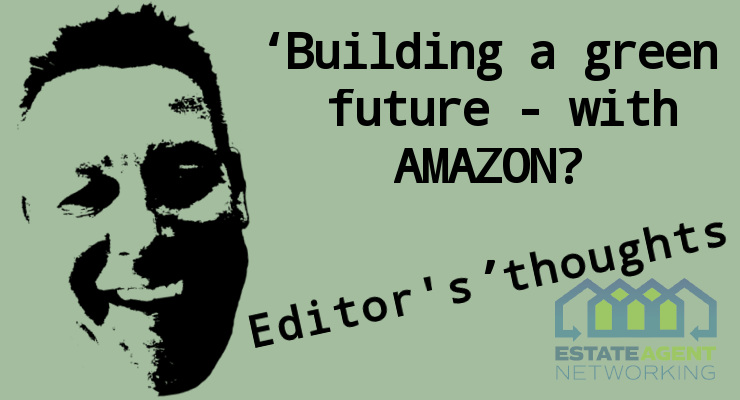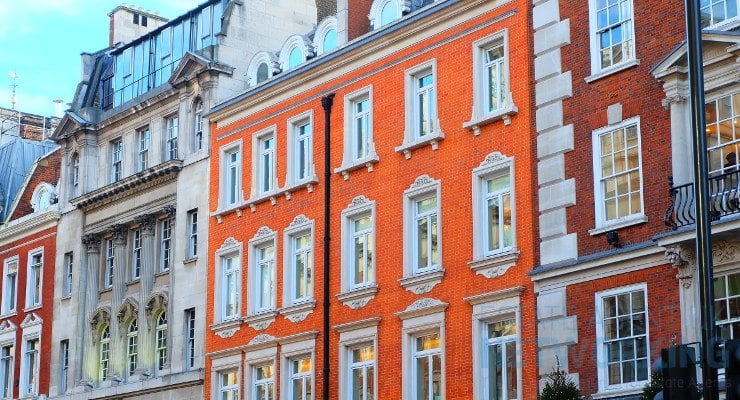Building a green future – with Amazon?
Can we create a built environment which gives more than it takes? Like many personal relationships in the 2020s, the bond between sustainability and real estate is a complicated one.
As ensuring the human-created environment is ecologically balanced and has ongoing green credentials is often sacrificed due to the many years needed to recoup the amount of energy used in the build.
Also, how do we even go about measure if we are giving more than we take? Well, two decades ago, BREEAM, a theoretical analysis set up by the Building Research Establishment, helped the cause. Its certification rating shows the sustainability level of a building. With many governmental departments insisting that developers include a BREEAM assessment as part of pre-planning process.
All sorted then, right? Well, no, because over 35% of UK greenhouse gas emissions, are caused by the built environment. So, whilst HBReavis has been awarded BREEAM stardom with its latest sci-fi inspired commercial creations, around the globe, the reality is that concrete, an environmental bandit, is still relied on too heavily.
The raw components of concrete have to be extracted: limestone, granite and, sand, the act of which is already environmentally unfriendly. Then, just like any love affair, more complications arise as the process progresses, producing huge amounts of greenhouse gases along the way.
When the calcium carbonate is thermally decomposed, it produces large amounts of lime and carbon dioxide. None of this is good. And nor is the fact that the whole process relies upon vast amounts of energy generated by burning fossil fuels.
So, like many personal relationships, maybe the concept of ‘green’ in the built environment is doomed? Unless we all live in mud hut, of course. Fortunately, Mother Nature rewards invention, and scientists are specifically working on changing the curing process of cement in order to reduce emissions.
Which, according to Marcello Rossi, was responsible for about 8% of global carbon dioxide (CO2) emissions in 2015…if it were ranked with individual countries, the cement industry would be the third-largest greenhouse-gas emitter in the world behind only China and the United States.’
I am comforted by the fact that PropTech advancement and the digital transformation of global real estate can deliver answers. There are some great minds looking at and investing in built environment sustainability, one of which I find a little ironic.

I’m talking about Amazon. Now, my spoilt and pampered co-director, cockapoo, Zara, (see photo) goes crazy three times a day when a huge Amazon cardboard box arrives at the front door, half-filled with essential goodies to keep mine and Zara’s relationship on track.
The carbon footprint of Amazon’s packaging and distribution is, I’m guessing, huge. So it’s strange to see CEO Jeff Bezos plough $6.7 million into a company called Plant Prefab, headed by a visionary called Steve Glenn.
The company executes homes which are, according to Ross Ufberg, the ideal marriage of high design, efficient building, environmental consciousness, and affordability.’
These Californian designer homes, with open vistas, constructed out of glass and wood in a modular format, are high-end, luxury properties. Designed by Yves Behar, a renowned industrial designer, they bring together simple elements stylishly, all with a distinct lack of concrete.
Great, you might think, big industry giving back through green design! Well, again we are back to how tricky relationships can be. Because, while these homes are green, they’re also going to be stacked with Amazon devices like Alexa’s.
So, questions around the sustainability of such hardware, let alone the thorny question of privacy and corporate intrusion, still exist. What is clear is that the environment and sustainability are central to all global governmental decision-making, despite the incumbent and now departing President’s views on the matter.
This means that planners and designers are looking closely at ways of reducing the carbon footprint of the building itself as well as the eventual running costs, such as lighting, water, heating, ventilation, and ongoing maintenance of the lived-in properties: all while trying to balance the initial cost of the construction with its ecological impact.
New tech delivers solutions to old problems, many of which seemed impossible to solve only a few years ago
I am comforted by the fact that PropTech advancement and the digital transformation of global real estate, from planning through to construction and disposal, can deliver answers.
New tech delivers solutions to old problems, many of which seemed impossible to solve only a few years ago. And with the rise of the so-called Millennial class and Gen-Z, thrusting for a more sustainable environment to live in, companies are seeing more and more reason, even if it’s self-serving, to contribute towards real estate’s efforts to ‘go green’.
Maybe the post-WWII concrete pre-fabs and tower blocks which dominate much of Europe will be re-imagined by new minds, given how much entrepreneurs love a challenge, and given their vast investment potential?
Tricky personal relationships may come and go, but commerce, and specifically the financial imperatives of capital and profit, will always win out. As the IFC Green Buildings blueprint report forwarded by Alzbeta Klein, Director of Climate Business, states:
‘Green buildings are a higher-value, lower-risk asset than standard structures. Besides lowering energy consumption, and therefore operational costs, greener buildings typically achieve higher sale premiums and attract and retain more tenants, ensuring a more continuous revenue stream. In addition, green buildings can help investors and owners manage the risks associated with a transition to a lower carbon economy.’
So, if nothing else, we can certainly hope that governments around the world implement such impactful new sustainability laws and regulations that real estate assets only maintain value if they don’t damage the environment. As they say, follow the money: hopefully, our industry can follow it all the way to a greener tomorrow.









